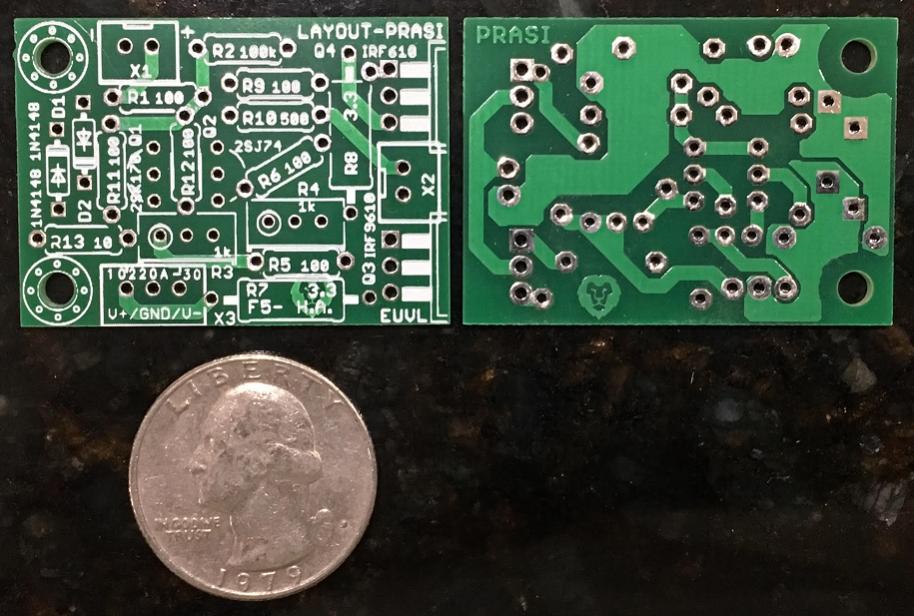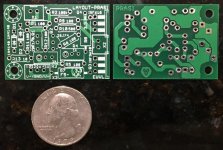Totally agree. It is expensive enough now😱 Just curious, are there no current production JFETs that can be used instead?
Regards,
Yes, there is the linear systems parts which are sold from this very site:
Linear Systems Matched JFET pairs (Grade B) – diyAudio Store
The prices of toshiba matched pairs are probably being held down by the linear system prices. If LS stops production, which is a real possibility given they were just bought out, then prices of NOS toshiba devices will go through the roof. Iam speculating here. But it's probably going to become reality soon. The time to start hoarding was probably 10 years ago but I think it's wise to always have a half dozen or so matched pairs around just in case.
It's a shame because so many of the diy designs use these jfets...pretty much all the pass stuff and many more.
They're Idss matched, but as you said they're not fully curve matched.
That said, expect fully curve matched quads is a bit unrealistic nowadays. Even if you manage to find a seller who'll do this, expect to be charged for a further premium.
Shouldn't we just need to match Idss at the one operating point or certain operation range to narrow down the matching requirement?
If you match at multiple points it's clearly a better match, and as the number of points increases you're approaching a full curve match. The transconductance is derived from the slope of the curve at the operating point.
But at that level, you should then match at the operating temperature instead. Very few seller, if any, would have that capacity.
For us typical DIYers, if I get an Idss matched quad from a seller, I think it's not bad already.
But at that level, you should then match at the operating temperature instead. Very few seller, if any, would have that capacity.
For us typical DIYers, if I get an Idss matched quad from a seller, I think it's not bad already.
http://www.diyaudio.com/forums/pass-labs/121228-f5-power-amplifier-304.html#post4795194
http://www.diyaudio.com/forums/pass-labs/121228-f5-power-amplifier-304.html#post4795279
But it is no good to have the equipment if you don't have a large enough pool of devices, idelaly a couple of thousands.
Patrick
http://www.diyaudio.com/forums/pass-labs/121228-f5-power-amplifier-304.html#post4795279
But it is no good to have the equipment if you don't have a large enough pool of devices, idelaly a couple of thousands.
Patrick
Hi Patrick, you certainly operates at a level quite above typical DIYers 😉
You know where I got mine from and they work well. Just sayin'...
Yeah, I found a source that sells unmatched pairs, relatively cheap as compared to matched ones. Actually I am thinking of building two HA, one uses matched JFETS and another unmatched sets. Just to see (hear) how big the differences are.
Regards,
They're Idss matched, but as you said they're not fully curve matched.
That said, expect fully curve matched quads is a bit unrealistic nowadays. Even if you manage to find a seller who'll do this, expect to be charged for a further premium.
I agree that exact matched quads are ideal but not too practical. Of course if one can afford the price, then perfection is the only choice. Unfortunately, not for a poor DIYer like me. Thank you for the comment.
Regards,
What percentage do you think those active device would be in the final cost of a properly built headphone amplifier like the F5-HA ?
And when they have more of an influence of the sonic signature than e.g. case, transformers, rectifier diodes, connectors, knobs, .....
Patrick
And when they have more of an influence of the sonic signature than e.g. case, transformers, rectifier diodes, connectors, knobs, .....
Patrick
Hi Patrick, you certainly operates at a level quite above typical DIYers 😉
That is certainly a "pro" grade setup. Is there a step by step guide on how to DIY your own Idss vs Vgs curves?
What percentage do you think those active device would be in the final cost of a properly built headphone amplifier like the F5-HA ?
And when they have more of an influence of the sonic signature than e.g. case, transformers, rectifier diodes, connectors, knobs, .....
Patrick
Patrick,
I guess different people will give you different answers. I understand your point. For these "purist designs" that excel in simplicity, the tolerance for all the components have to be very tight in order to extract all the performance build into the design.
Regards,
Yes, there is the linear systems parts which are sold from this very site:
Linear Systems Matched JFET pairs (Grade B) – diyAudio Store
The prices of toshiba matched pairs are probably being held down by the linear system prices. If LS stops production, which is a real possibility given they were just bought out, then prices of NOS toshiba devices will go through the roof. Iam speculating here. But it's probably going to become reality soon. The time to start hoarding was probably 10 years ago but I think it's wise to always have a half dozen or so matched pairs around just in case.
It's a shame because so many of the diy designs use these jfets...pretty much all the pass stuff and many more.
Thank you for the link.
Is there a step by step guide on how to DIY your own Idss vs Vgs curves?
I don't have such a guide, but you may take a look at this:
http://www.diyaudio.com/forums/solid-state/151253-diy-curve-tracer-pc.html
FYI, for those of you doing the veroboard layout in post 1 it's important to put a resistor at input hot to ground...probably 47K-100K ish. This resistor, while not on the veroboard layout can be put across the RCA jacks if you wish.
Why?
We'll it provides a path to ground if you unplug the inputs which may save the amp if you unplug/plug while powered up but also it establishes the input impedance.
How do I know? Well, I couldn't figure out why this thing sounded good with my vinyl setup that has a buffer on the output of the phono stage but bad with my DAC which has a higher output impedance. The DAC didn't like feeding into a 10K pot directly. A couple of resistors across the RCA's and all is well with the digital setup. Before, it was dull and lacked contrast. Now, it's all lit up.
I know this is elementary stuff but I thought you guys following the veroboard layout should be aware.
Why?
We'll it provides a path to ground if you unplug the inputs which may save the amp if you unplug/plug while powered up but also it establishes the input impedance.
How do I know? Well, I couldn't figure out why this thing sounded good with my vinyl setup that has a buffer on the output of the phono stage but bad with my DAC which has a higher output impedance. The DAC didn't like feeding into a 10K pot directly. A couple of resistors across the RCA's and all is well with the digital setup. Before, it was dull and lacked contrast. Now, it's all lit up.
I know this is elementary stuff but I thought you guys following the veroboard layout should be aware.
Attachments
Yes, I have 100k SMT resistor to GND. I debated putting added 330 pF cap to find at input to suppress possible RF. Most other amps have this.
> The DAC didn't like feeding into a 10K pot directly.
> A couple of resistors across the RCA's and all is well
So it likes 100k // 10k = 9.09k more ?
Strange DAC you have.
🙂
BTW putting it at the F5-HA input is NOT the same as putting it at the RCA, if you have a 10k pot in between.
Patrick
> A couple of resistors across the RCA's and all is well
So it likes 100k // 10k = 9.09k more ?
Strange DAC you have.
🙂
BTW putting it at the F5-HA input is NOT the same as putting it at the RCA, if you have a 10k pot in between.
Patrick

Hikari 🙂... you seem to keep hitting the 'report' button (the little red triangle) instead of 'Post Reply'.
This was your post:
Yes, you are right.
Which would you suggest? Before the pot or between the pot and amp?
Have you read the PDF?
http://xen-audio.com/documents/f5ha/F5-HA Description V1.4.pdf
Everything you need except some of the more exotic PSU options.
No ! Thanks for the link I was not aware of that.
- Home
- Amplifiers
- Pass Labs
- F5 Headamp ?

